Important links:
Copyright © 2020-2025 TuringPod. All rights reserved.
Designed and developed by: Hridayjit Kalita
The phenomenon of Raman spectroscopy generally was first discovered by Sir Chandrasekhra Venkata Raman in 1928 using sunlight as the source of light, a telescope as a collector and his eyes as a detector. With further development in new technologies such as varieties in laser excitation sources, varieties in improved detectors, collimators, lenses, polarizer, monochromators etc, sensitivity of the Raman spectroscopy have enhanced tremendously and minute details of the spectrum exhibiting the nature of the sample can be examined.
In the initial stage, for achieving a highly monochromatic input light, development was mainly limited to the improvements in excitation sources. Various lamps such as Helium, lead, zinc and bismuth lamps were developed but due to their low intensities they were not considered fit for a variety of sample studies. Mercury excitation sources were first used for Raman spectroscopy in the 1930’s. Later a mercury excitation source system consisting of four mercury lamps surrounding the sample was developed for Raman instruments by Hilger Co. Ham and Walsh [N. S. Ham and A. Walsh, Spectrochim. Acta 12, 88 (1958)] developed microwave powered lamps of helium, sodium, potassium, rubidium and mercury. Use of these elements along with Argon, Cesium and rubidium as an excitation source for coloured materials was also later examined by Stammreich [H. Stammreich, Spectrochim. Acta 8, 41 (1956)]. Ar+ and Kr+ laser were later developed and credited with their suitability and recently Nd-YAG lasers have been used extensively in the Raman spectroscopy.
In the detection system, photographic plates were first used which suffered from the cumbersome and time consuming production. Later in the year 1942, photoelectric Raman instrument was developed by Rank and Weigand [D. H, Rank and R. V. Wiegand, /. Opt. Soc. Am. 32, 190 (1942).] using a cooled cascade type RCA IP21 detectors followed by cooled RCA C-7073B photomultiplier in 1950.
In the optical train system, developments were made in the early 1960’s where reduction in stray lights affecting the Raman spectre was tackled by using double and triple mono-chromators instead of using just the single one. The efficiency of collection of the scattered spectrum was further achieved by the introduction of holographic gratings.
Instrumental details of Raman spectroscopy:
The Raman spectroscopy mainly consists of components such as the excitation source, sample illumination and collection system, wavelength selector and detection and processing system [Ferraro, J.R., Nakamoto, K., Brown, C.W., (2003) Introductory Raman Spectroscopy, (2) Elsevier Science, USA]. All other accessory instruments are selected and are influenced by the wavelengths of the instrument’s excitation source, detection range and the type of wavelength selector.
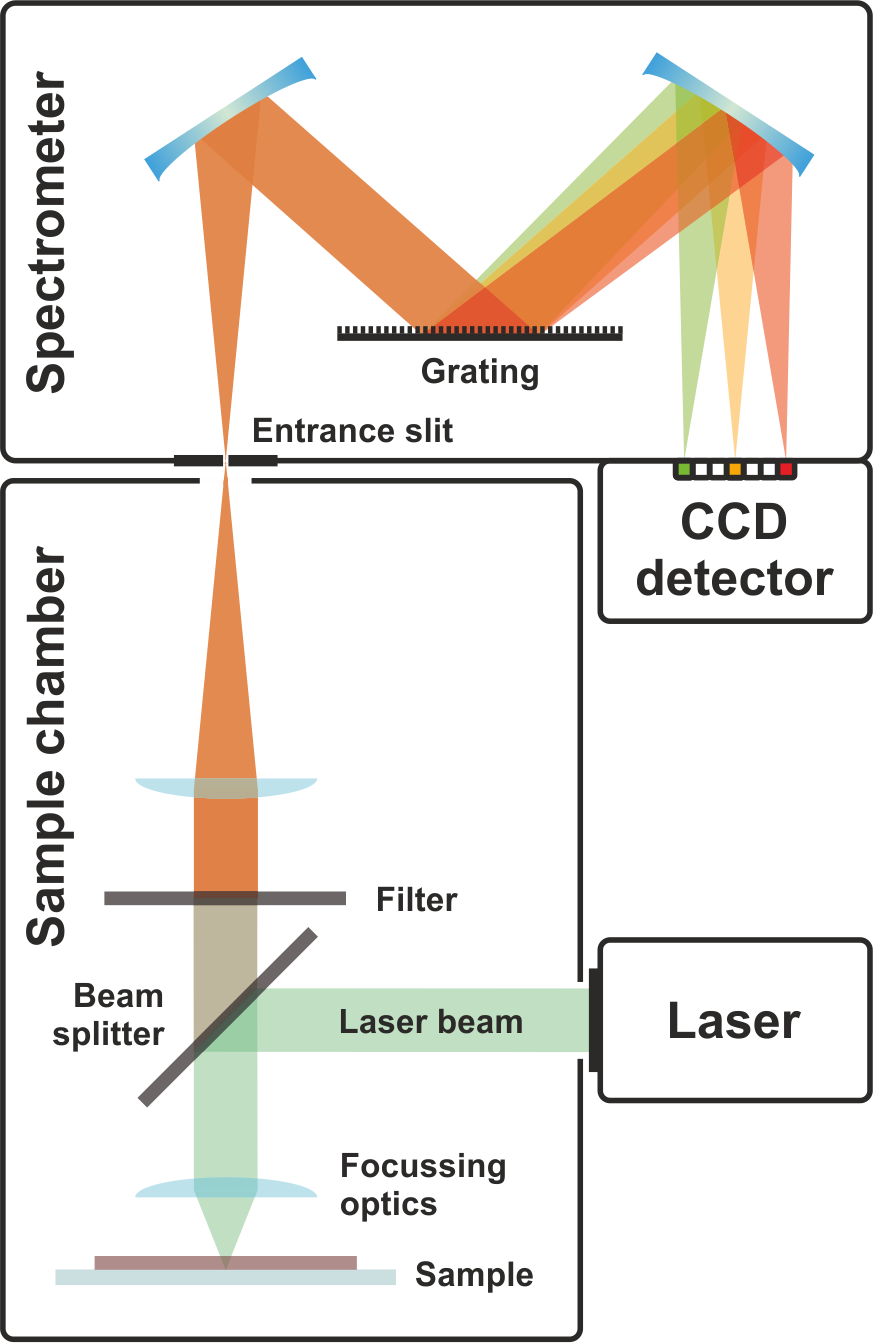
Components of a Raman Spectrometer, Source: Wikimedia Commons
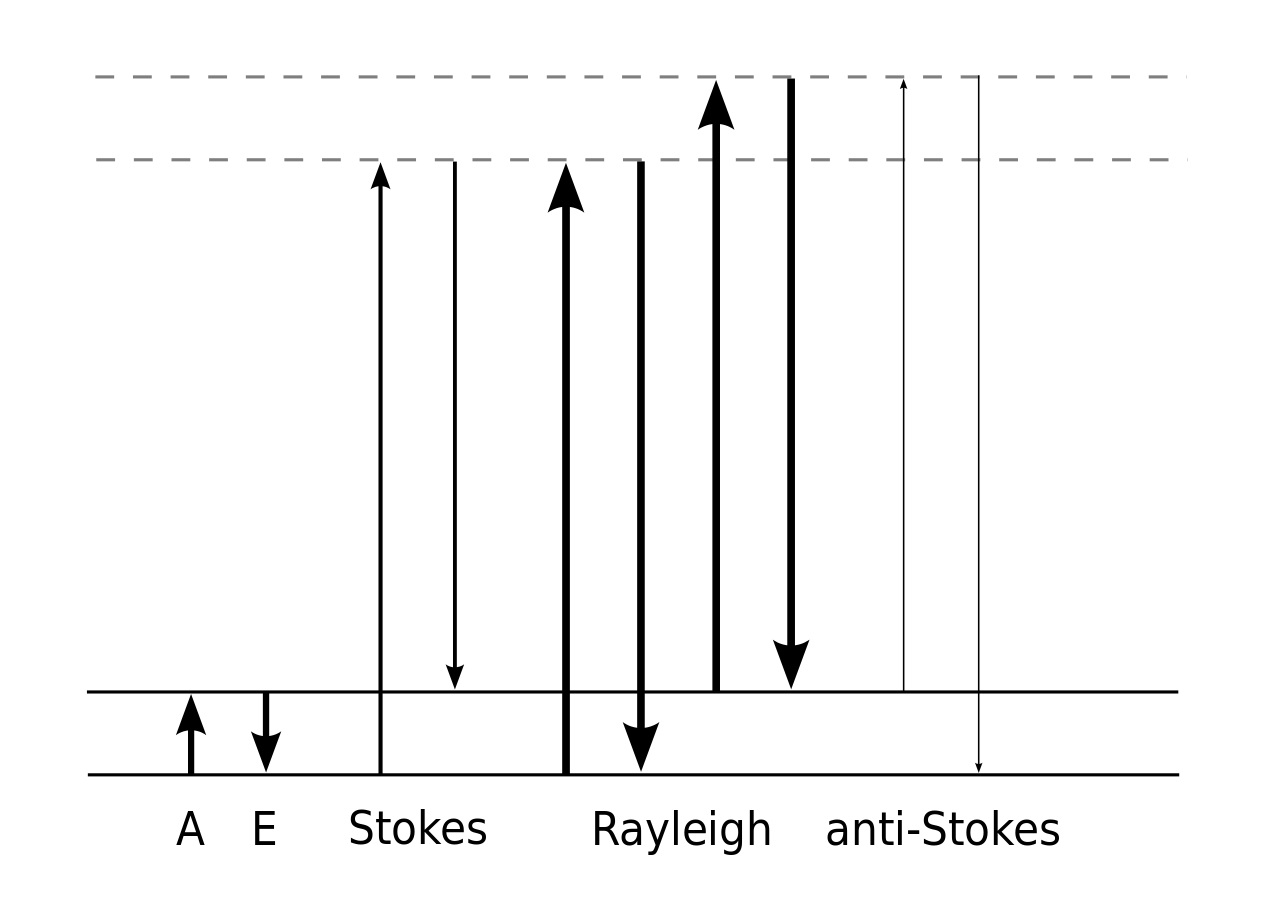
Raman and Rayleigh spectral lines, Source: Wikimedia Commons
Excitation source: Mercury lamps and filters (for a fixed range of wavelength) and high power light sources were mostly used before the introduction of laser source in 1960s. But due to higher delay in warming and igniting with these lamps, laser sources were preferred/adopted by many researchers and spectrographic community to detect Raman scattering.
Commonly used laser sources for Raman spectroscopy includes continuous wave lasers (Ar+ , Kr+ and He-Ne), pulsed lasers (Nd:YAG) and excimer lasers. The advantages of laser over other excitation sources such as Mercury lamp and filters can be given as follows:
- Laser light sources produces powerful beam with pulsed lasers having the peak power in the order of 10-100MW.
- Laser light sources are highly monochromatic where the extraneous light is much weaker and can be eliminated using notch filters and pre-monochromator.
- Laser beams are highly concentrated having a smaller diameter that delivers high power on a small section of the sample and facilitating studies on small crystals and microliquids.
- Laser sources are polarized and are employed in measuring de-polarization ratios.
- Using dye lasers and devices, laser sources can be obtained in a wide range of wavelengths.
Sample illumination and collection: Sample illumination is done with laser beam of smaller diameter (1 mm) being directed on the surface of the sample, the scattered light of which is collected at an optical orientation of 900 or 1800. The illumination and collection system is important as the Raman scattering is weak and must be efficiently collected by an achromatic lens system (consisting of a collector lens and a focussing lens).
In oblique illumination, the laser beam is directed at an angle close to 850 from the normal to the surface of the sample and the use of collecting lens is avoided and instead an ellipsoidal mirror is used to focus the scattered UV on the entrance slit. Achromatic lens system is necessary as it eliminates the need to adjust the position and focus of the observing lens to obtain Raman signal and need not repeat the procedure with changing laser wavelengths. A bright image might sometimes arise in case of 90 degree and the oblique scattering configuration due to fluorescence or reflection of the light from reflective surfaces of the glass and the sample. Therefore, caution must be taken and image processing of the irradiated sample at the entrance slit of the mono-chromator must be done with proper sequential procedure.
Wavelength selector: Interference filter monochromators are the simplest and the most common type of wavelength selectors which allows selective wavelength of light to pass through a flat semi reflecting medium of dielectric having thickness the half of the desired wavelength of light. Though, Monochromators are commonly used to analyse Raman spectre, developments in FT Raman has given a tough competition to the use of Mono Chromators in Raman spectroscopy.
Detection of the Raman spectre Detection and amplification of Raman spectral lines was very difficult during the early period of development and was accomplished by micro photometers examining the long exposed photographic plates. With the introduction of advanced laser source for monochromatic light and sensitive detectors, a number of techniques have been devised in order to detect and amplify the Raman spectral lines. The major ones include Photon counting, Photodiode array and Charged Coupled device (CCD).
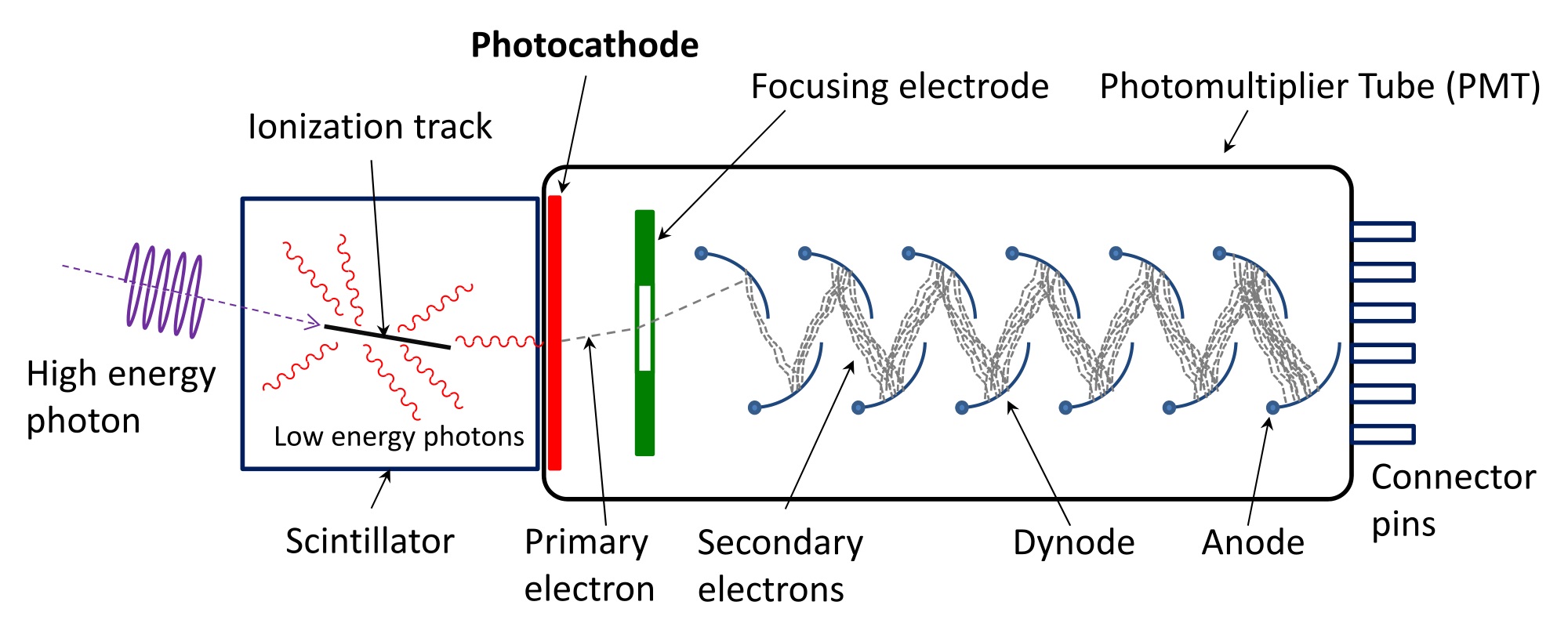
Photomultiplier, Source: Wikimedia Commons
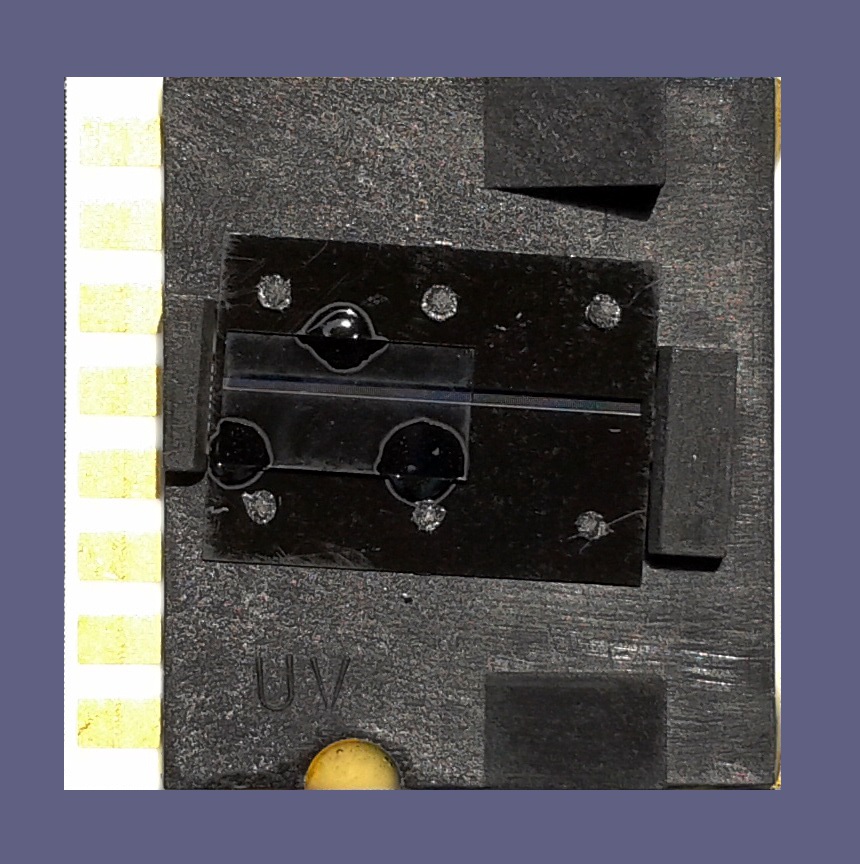
Photo diode array, Source: Wikimedia Commons
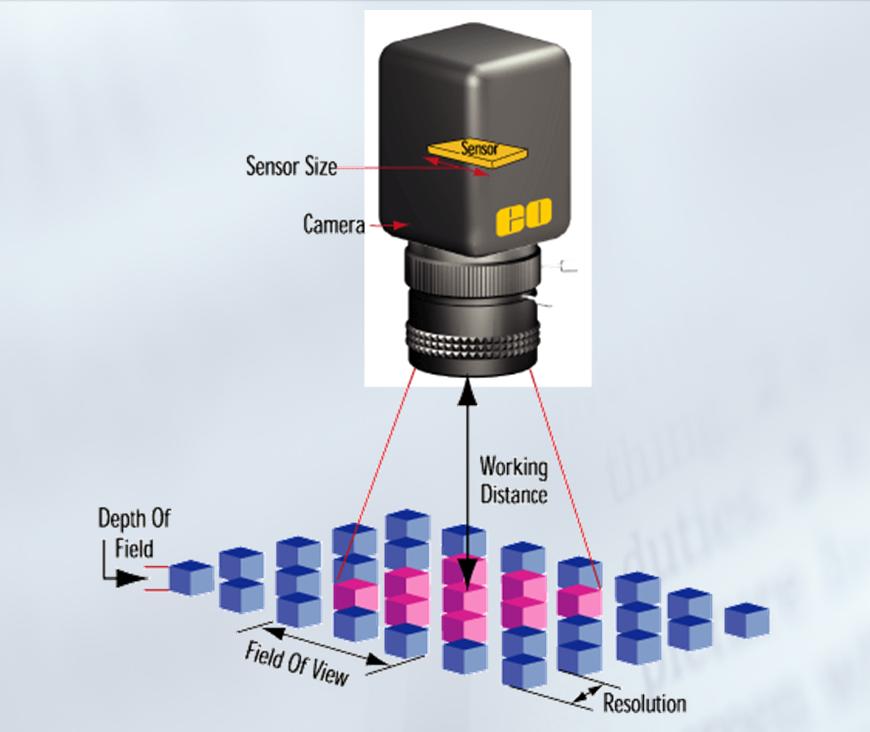
Charge coupled device (CCD), Source: Wikimedia Commons
Important links:
Copyright © 2020-2025 TuringPod. All rights reserved.
Designed and developed by: Hridayjit Kalita